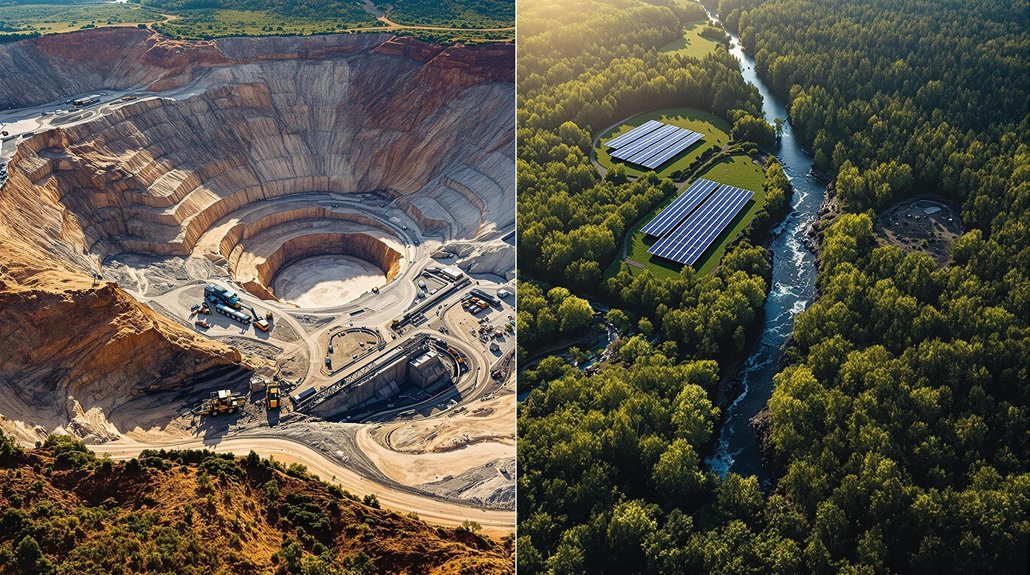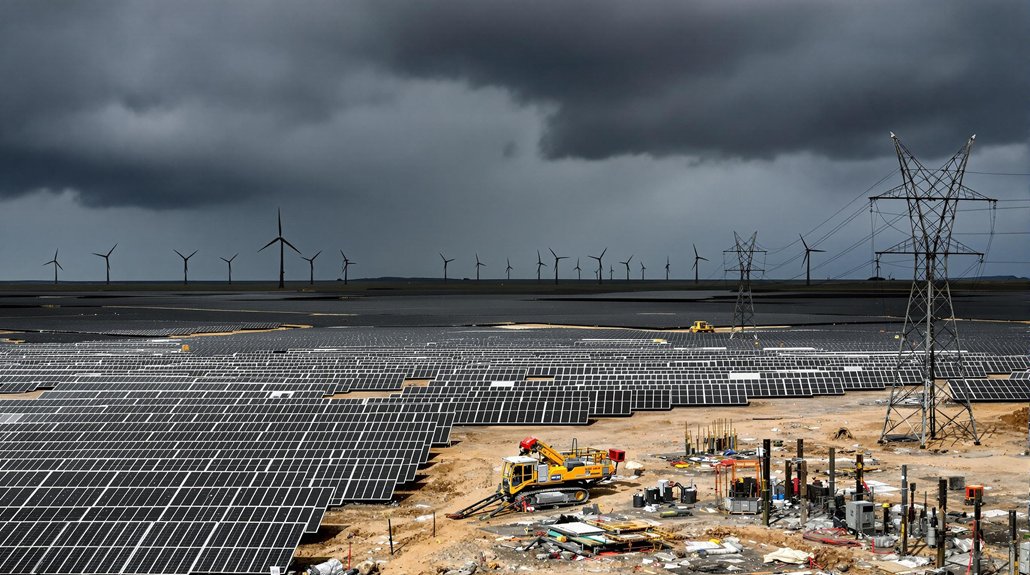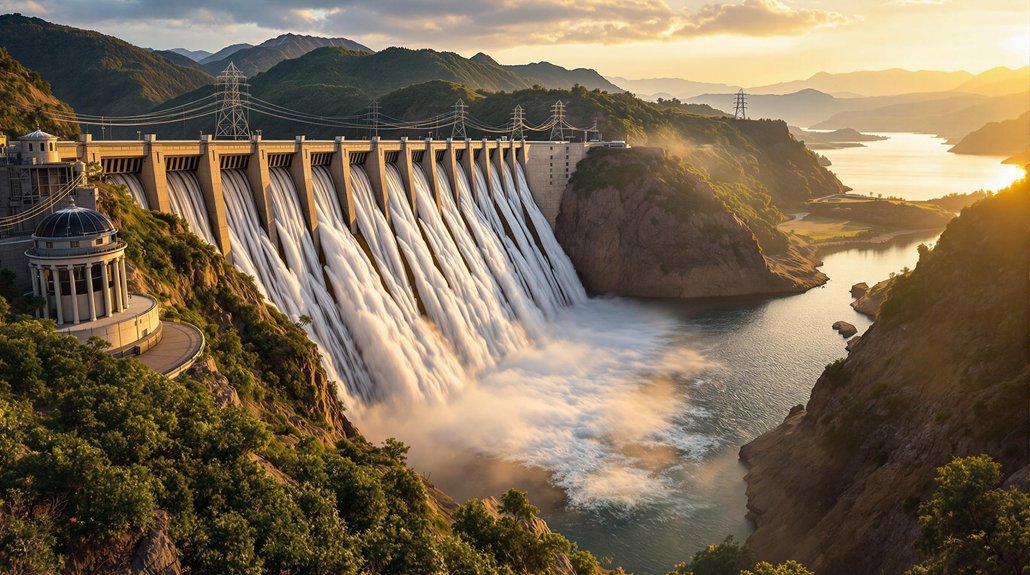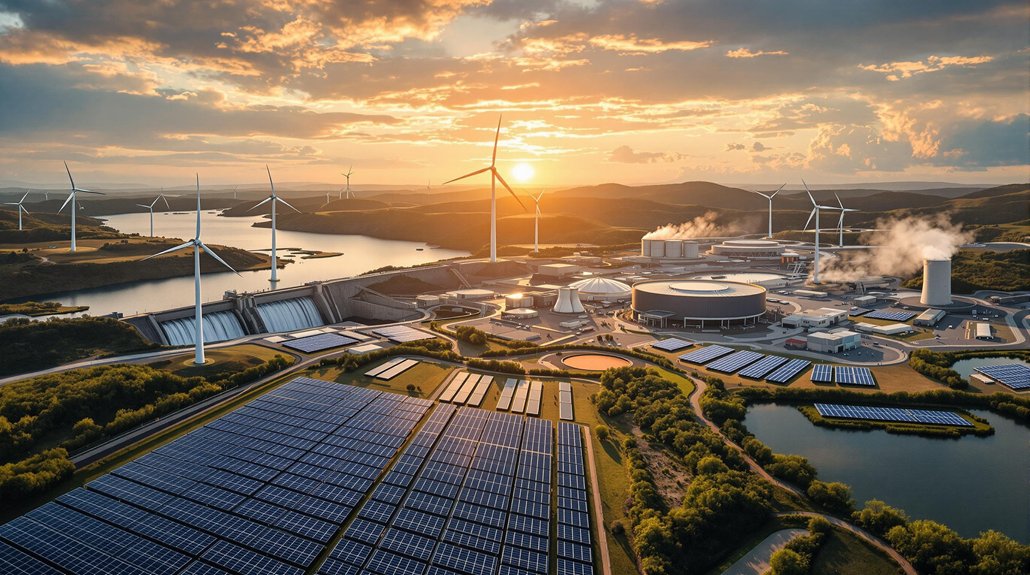Natural resource depletion occurs as humans extract 60 billion tons of resources annually, far exceeding nature’s replenishment capacity. Population growth, wasteful consumption, and unsustainable practices drive this crisis. The impacts include ecosystem destruction, climate change, and water scarcity affecting one-third of people globally. Economic consequences involve rising prices and job losses, while social effects include food insecurity and health problems. Understanding these interconnections reveals potential pathways to sustainable resource management.
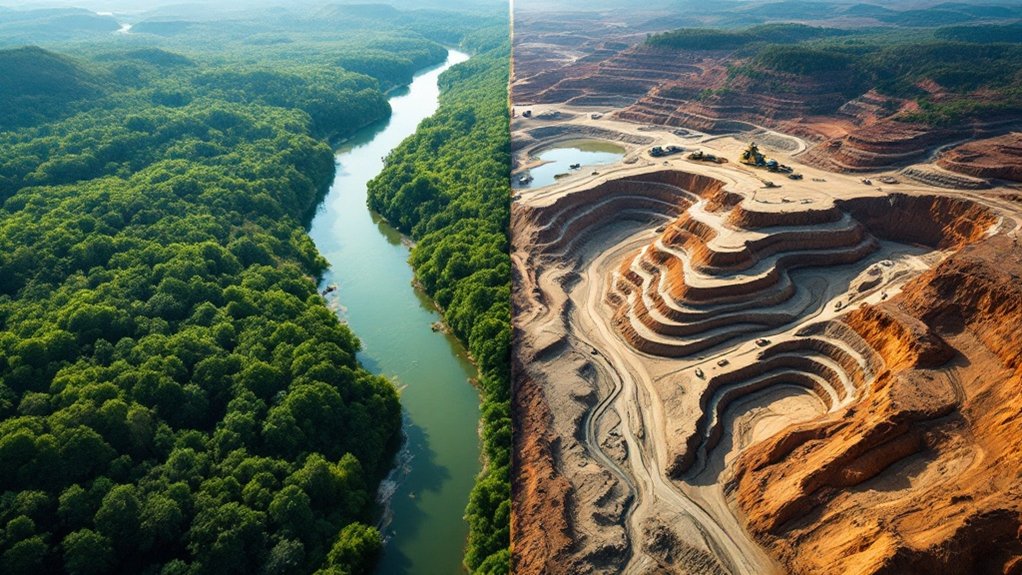
The alarming rate of natural resource depletion stands as one of the most pressing environmental challenges facing our planet today. Each year, humans extract about 60 billion tons of resources from the Earth, far exceeding the rate at which these resources can be replenished. This affects both renewable resources like forests and water, and non-renewable resources such as minerals and fossil fuels.
Several key factors drive this depletion. Rapid population growth has dramatically increased demand for resources worldwide. Meanwhile, wasteful consumption patterns, especially in developed nations, accelerate the problem. Resource extraction has tripled since 1970, placing unprecedented pressure on the planet’s natural systems. Deforestation continues at a rate of 10 million hectares annually, primarily for agriculture and urban development. Intensive mining operations extract minerals and fossil fuels without considering long-term sustainability. These unsustainable activities lead to soil degradation, reducing the land’s ability to support agriculture and natural ecosystems.
The environmental impacts are severe and widespread. Ecosystems are being destroyed, leading to significant biodiversity loss. Climate change worsens as greenhouse gases from fossil fuels accumulate in the atmosphere. The Industrial Revolution marked the beginning of systematic environmental damage through large-scale fossil fuel consumption and resource exploitation. One-third of the world’s farmable land has been lost to erosion since 1960, threatening food production. Water sources face pollution and scarcity, with one in three people globally experiencing water shortages.
These environmental changes create serious economic problems. As resources become scarce, prices rise, affecting businesses and consumers. Countries that depend heavily on natural resources face slowed economic growth and job losses. The unpredictable availability of resources creates economic instability in many regions.
The social consequences are equally concerning. Many communities face food and water insecurity. People lose their homes and livelihoods as resources disappear. Health problems increase due to pollution and environmental damage. Competition for dwindling resources sometimes leads to conflict between communities and nations.
Scientists track resource depletion using several methods, including the Ecological Footprint, which measures human demand on nature, and various indices that compare consumption rates to natural regeneration. These measurements help identify unsustainable practices and guide efforts to develop more responsible resource management strategies for the future.
Frequently Asked Questions
How Does Resource Depletion Impact Biodiversity?
Resource depletion severely threatens biodiversity worldwide.
Habitat destruction from activities like deforestation and agriculture has led to a 47% decline in natural ecosystems. One million species now face extinction risks.
When habitats disappear, food chains collapse and species can’t survive. The consequences include reduced ecosystem resilience, disrupted ecological relationships, and loss of critical services like pollination.
Climate change further amplifies these threats to plants and animals.
Can Resource Depletion Cause International Conflicts?
Resource depletion often triggers international conflicts. When resources like water, oil, and minerals become scarce, countries compete for what’s left.
Over 40% of civil wars in the past 60 years have been linked to natural resources. The Middle East faces water disputes, while African nations fight over diamonds and minerals.
Climate change is making things worse by reducing available resources, especially in regions that already lack stability.
Are There Economic Benefits to Conservation Policies?
Conservation policies offer significant economic benefits nationwide.
They’ve created millions of jobs in nature-based tourism and green industries. Studies show every $1 invested in land conservation returns $9 in economic value.
Protected areas boost local economies through tourism revenue. Conservation also provides cost savings by maintaining ecosystem services like natural flood protection and water filtration.
These policies can stimulate economic growth while preserving natural resources for future use.
How Do Developing Nations Balance Growth With Resource Conservation?
Developing nations often struggle to balance economic growth with resource conservation.
These countries implement approaches like community-managed resources and sustainable farming to preserve natural assets while creating jobs. International support through technology transfers and financial aid helps fund conservation efforts.
Some nations use ecotourism to generate revenue from protected areas.
Balancing immediate economic needs with long-term sustainability remains challenging but increasingly necessary.
What Role Does Indigenous Knowledge Play in Resource Management?
Indigenous knowledge plays a crucial role in resource management worldwide. Native communities use traditional practices passed down for generations to conserve natural resources. Their methods often protect biodiversity, manage forests, and maintain water sources sustainably.
When combined with modern science, these approaches improve conservation outcomes. Despite their value, indigenous communities aren’t always included in decision-making processes. Many experts now recognize that protecting indigenous rights strengthens environmental protection efforts.
